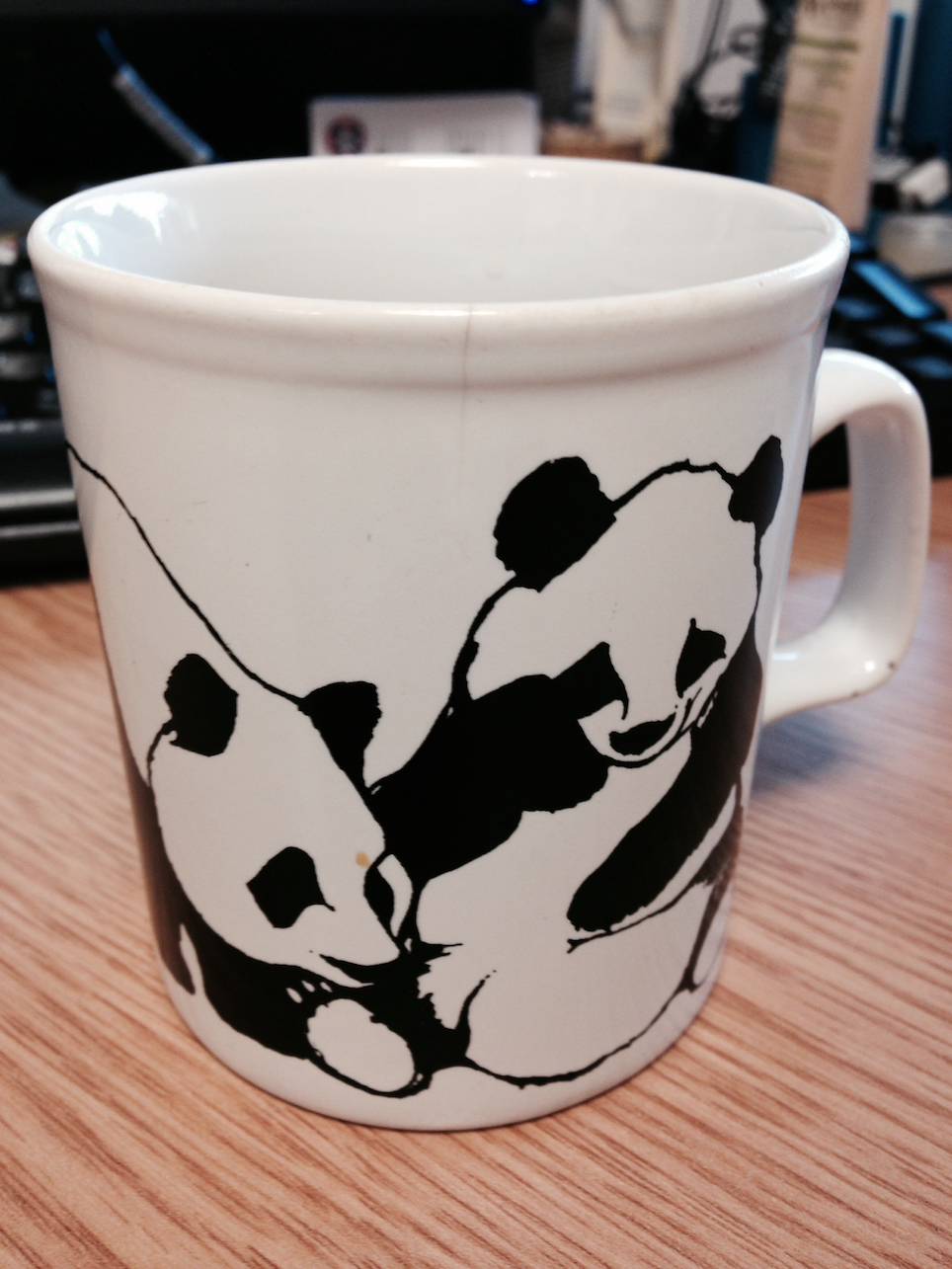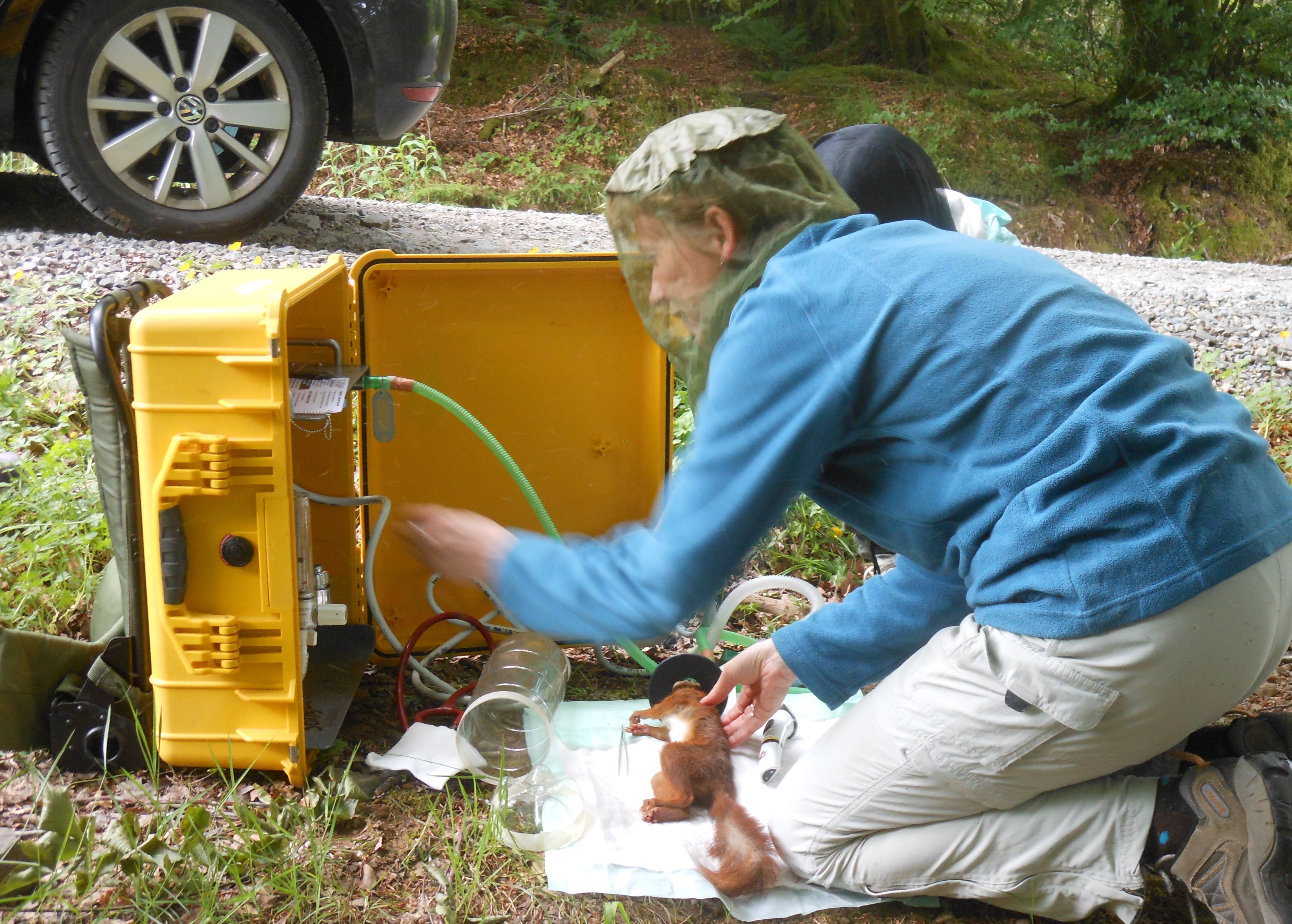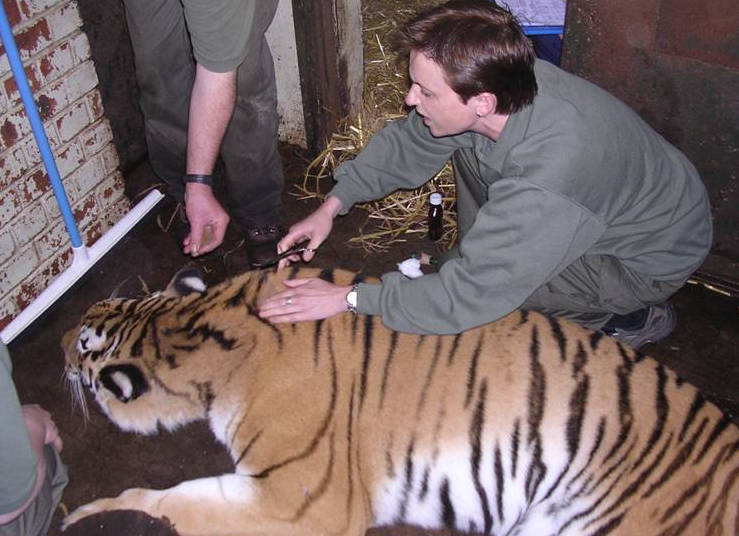
Sciences & Technology
If we could talk to the animals

From reintroducing previously-extinct species to examining apex predators, the new Head of the Melbourne Veterinary School Anna Meredith works across disciplines to maintain diversity in ecosystems
Published 5 July 2018
I don’t think it’s an exaggeration to say our lives depend on the maintenance of biodiversity and the conservation of healthy ecosystems on this planet. A large part of human history has been working against nature, taking from it rather than balancing with it.
We’re now in this era, the Anthropocene, where we recognise the biggest influence on the planet is people. If you look at graphs of extinctions of animal species, they are rising exponentially. I don’t think there’s any doubt now that it’s unsustainable. Our health now and in the future depends on maintenance of balanced and viable ecosystems.

I always wanted to be a vet, and my mother, who was a biology teacher, fostered in me a very keen interest in the environment and caring for the planet from a very early age. She was really an inspiration.
I joined the World Wide Fund for Nature (WWF) when I was about seven. I actually still have my 47-year-old WWF panda mug which I drink my coffee from every day.
I carried that passion about wildlife conservation all the way through my veterinary degree and I knew that that’s what I wanted to end up doing, even though at the time it was a hard field to get into. My first job was at a small animal and horse practice in Edinburgh. At that time the vet for Edinburgh Zoo was a fantastic large animal vet employed by the University of Edinburgh called David Shannon.

I asked if I could volunteer to help him on his weekly zoo visits, and we became friends. About nine months into my first job he announced he was retiring and the university decided to create a new post – a Lecturer in Laboratory Animal and Zoo Animal Medicine. I applied, and I got the job! I think it was being in the right place at the right time and having demonstrated my enthusiasm at the zoo. I did it because I wanted to work with the zoo animals, but actually working with laboratory animals also turned out to be fantastic.
I learned so much. At that time the university laboratory animals included many rats, mice and rabbits, but we also had monkeys, cattle, sheep, fish, clawed frogs, birds… everything. It was a fantastic mix because I was at the cutting edge of research, like all the developing transgenics research in the early to mid-90s. By developing expertise in ‘exotic’ animals, this led to me establishing the first ever exotic and wild animal clinic at a vet school in the UK.
I was really proud to be promoted to professor on the basis of my clinical and teaching work, before I had been awarded my PhD, so I’m a big champion for the value of clinical work and teaching in their own right in academia. I did my PhD part time with two young children, which was challenging, but I think doing it at that stage in my career gave me the maturity and the breadth of experience to approach it in a very different way. I was able to think much bigger-picture and was more interested in how this could be directly applicable to disease surveillance and conservation.
My PhD was on using carnivores, such as foxes, as sentinels. Sentinels are animals that can tell us an awful lot about the ecosystem they live in. Carnivores can effectively sample the prey population. By examining carnivores for antibodies to certain diseases, I could get a really good reflection of what was going on in the populations of animals that they were eating. It’s a bit like the canary in the coal mine, and not just for infectious diseases, but toxins and pollutants important to human health.

There are so many opportunities for the veterinary sciences to work with other disciplines. I think one of the really exciting areas is conservation genetics which studies the dynamics of genes in wild populations. This is done principally to avoid extinction by maintaining genetic diversity, which is very important when managing populations of animals - particularly with interventions like translocations and reintroductions for conservation purposes.
The research group I led found leprosy-causing bacteria in red squirrels in the UK and Ireland. We think of leprosy as a human disease of the past, but there are still around 220,000 new cases reported annually, and reservoirs of the disease in wild animals may contribute to that plateau of infection despite the availability of effective treatments.

Sciences & Technology
If we could talk to the animals
For the squirrels, susceptibility to developing leprosy is likely to be related to their genetic make-up. We can also apply genetic methods to map the history of diseases like leprosy to understand where they come from, how they’ve evolved or co-evolved with their hosts and develop an idea of potential future threats to both animal and human health.
I was also part of a project to reintroduce beavers to Scotland. Beavers were native until they were hunted to extinction around 300 years ago. They are a really important part of the ecosystem as they manage forests and streams – they’re real ecosystem engineers. We’d lost that from Scotland, so returning something that should be there was a fantastic project and a huge success, but very challenging to achieve.
Reintroductions require a collaborative, whole-ecosystem approach. The veterinary involvement in this particular project was making sure the beavers, which were coming from Norway, were healthy and wouldn’t introduce a disease that could have knock-on effects for other species in Scotland, including people.
Beavers are rodents and can carry diseases that affect humans. We also looked at the health of the existing species to make sure the beavers didn’t contract a disease that they were not immune to.
I think it’s vital to train the veterinary scientists of the future to have this kind of holistic understanding. That’s why I’m so excited to join the Faculty of Veterinary and Agricultural Sciences, which is a great example of an organisation with a vision of One Health – this is an approach that recognises the interconnectedness of human health, animal health and environmental health.

One Health recognises it isn’t possible to sustain one of these without addressing the others, particularly as around 60 per cent of diseases in humans are zoonotic, meaning they can spread between us and animal species.
Conservation of biodiversity isn’t just something that happens in India or Africa. It’s not just saving the tiger or other iconic species, it’s actually in your own backyard. That’s why I’ve liked working with Scottish wildlife and look forward to working in the Australian environment. Maintaining biodiversity is important wherever you are in the world – all our futures depend on it.
As told to Stuart Winthrope, University of Melbourne
Banner: Eurasian beaver/ Shutterstock